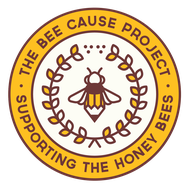Bee A Friend To Pollinators
(View Complete Item Description)This lesson plan and assessment takes you on a journey to discover if pollinators find your campus a hospitable home. Core compliant for Grades 3-5, but adaptable to all ages. Are you working with distance learners or in a non-traditional teaching environment? This lesson plan is perfect for you! All you need is a pencil and outdoor space, including sidewalks, local parks, greenways, libraries, and beyond!
Material Type: Assessment, Lesson, Lesson Plan, Teaching/Learning Strategy




















